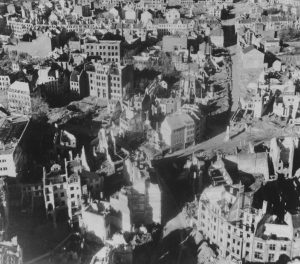At least 60 killed in renewed Israeli strikes on Gaza

A series of Israeli airstrikes across the Gaza Strip early Wednesday, May 14, killed at least 60 people, including 22 children, according to sources citing Gaza’s Health Ministry and local hospitals. The strikes hit homes in areas including Jabaliya in northern Gaza and Khan Younis in the south.
Health officials said rescue teams struggled to reach victims buried beneath rubble.
The bombardment followed Hamas’ release of Edan Alexander, an Israeli-American hostage, in a deal facilitated by U.S. officials. Israel briefly paused military operations for the exchange but resumed airstrikes roughly an hour after Alexander left the territory.
Why did Israel escalate the attacks?
Israeli Prime Minister Benjamin Netanyahu said Tuesday there is “no way” Israel will halt its military campaign until Hamas is eliminated. The military had warned residents of Jabaliya to evacuate, citing the presence of rocket launchers and militant infrastructure.
Netanyahu also indicated Israel was days away from a broader escalation, promising to enter Gaza “with great strength” to finish the mission.
What are the humanitarian concerns?
Unbiased. Straight Facts.TM
Nearly 500,000 people in Gaza face catastrophic hunger due to Israel’s blockade of food, medicine and fuel.

Aid organizations and international officials warn that Gaza is nearing famine. The Integrated Food Security Phase Classification reported that nearly 500,000 people face catastrophic levels of hunger. Another 1 million residents are struggling to access enough food.
France strongly criticized Israel’s blockade on aid, calling it a contributor to the humanitarian crisis. French President Emmanuel Macron condemned Prime Minister Netanyahu’s refusal to allow aid shipments, saying the policy prevents medical evacuations and leaves doctors without supplies.
Gaza’s population of 2.3 million remains largely dependent on external assistance, but Israel has restricted the entry of food, medicine and fuel since March 2. The blockade has coincided with heavy bombardment and ground operations, which have displaced an estimated 90% of the population, often multiple times.
How has the U.S. responded?
President Donald Trump visited Saudi Arabia, Qatar and the United Arab Emirates this week as part of efforts to broker further hostage releases and revive stalled ceasefire negotiations. U.S. envoys also met with hostage families in Tel Aviv.
Trump said more hostage releases may follow and proposed a plan to resume humanitarian aid to Gaza using private contractors. Israel has supported the plan, but the United Nations and several aid groups have rejected it due to concerns over oversight and logistics.
Is Hamas leadership affected?
Israeli media cited unnamed security officials who claimed that a strike on Tuesday may have killed Hamas military leader Mohammad Sinwar. The attack reportedly targeted a command bunker beneath the European Hospital in Khan Younis, but the Israeli military has not confirmed his death. Medics said an Israeli strike on a bulldozer near the site wounded several people on Wednesday.
What’s next in the conflict?
Ceasefire talks remain fragile, with Hamas and Israel trading blame for their collapse. Israel sent a delegation to Doha for new negotiations, while Hamas communicated through mediators in the U.S., Egypt and Qatar. Meanwhile, Islamic Jihad launched rockets at Israel late Tuesday, prompting further Israeli retaliation.
The situation remains volatile, with both sides warning of continued action and international observers urging de-escalation to avoid worsening the humanitarian disaster.





